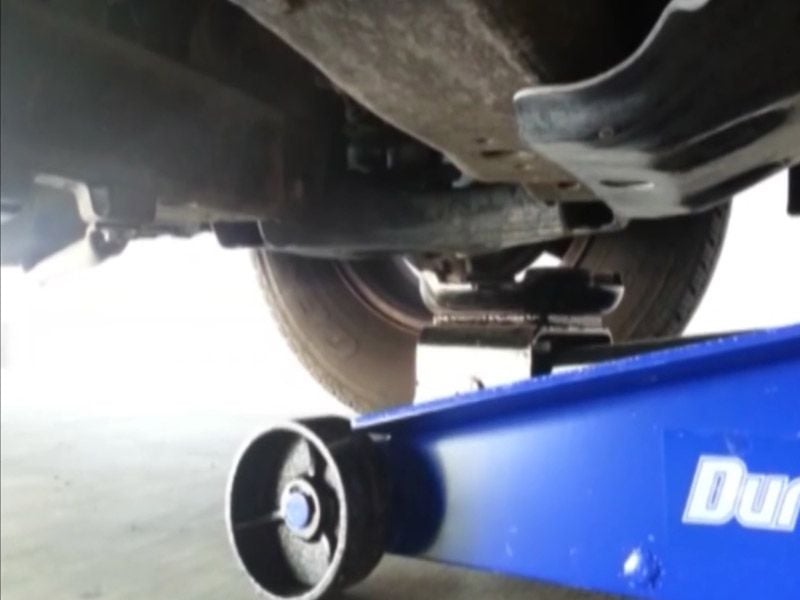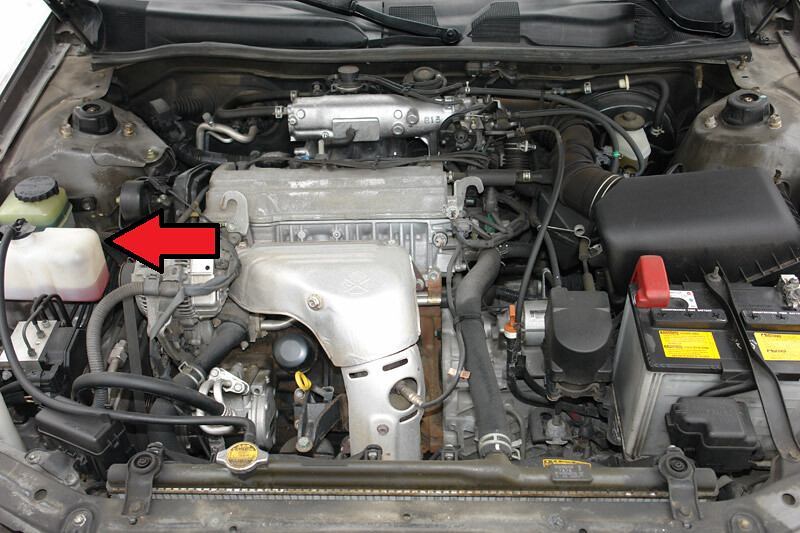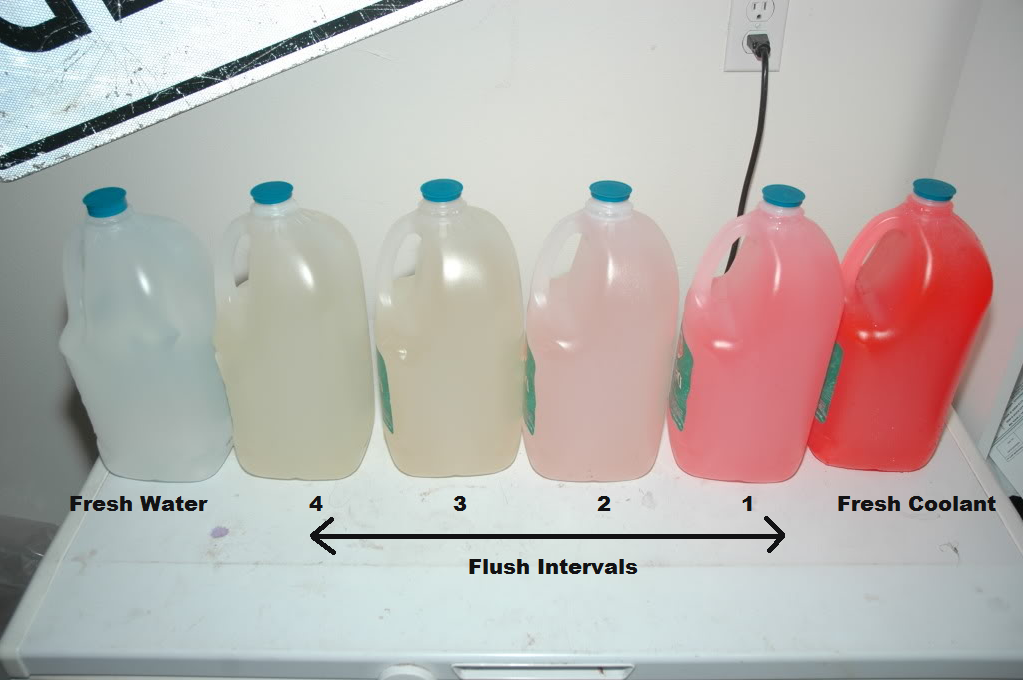Toyota Camry 1997-2011: How to Flush the Coolant System
If you want your Toyota Camry's radiator to keep your engine cool, you need to maintain it right. Flush your radiator to get all the dirt and grime out so your radiator can cool your motor at full potential.
This article applies to the Toyota Camry (1997-2011).
Engine coolant, also known as antifreeze, is an important and often overlooked maintenance item. Among its many functions, coolant raises the boiling point of water while also lowering its freezing temperature. Additionally, engine coolants have various additives that help fight corrosion between dissimilar metals and help lubricate seals in the water pump. Although modern coolants are continuously evolving and allow for longer maintenance intervals, they still break down over time and mileage, and cannot effectively protect your engine. Old coolant will begin to lose its resistance to boiling and freezing, and in severe cases, it can allow for rust and scale to build up in the cooling system. It is usually a good idea to flush your cooling system every few years or every 50,000 miles. This article will detail the steps involved in flushing the cooling system on the fourth generation Toyota Camry.

Materials Needed
- Floor jack
- Jack stands
- Funnel
- Large catch pan
- Metric sockets and wrenches
- 1/4" hose
- Distilled water
- 1+ Gallon of new coolant
Step 1 – Lift and support vehicle
To drain the coolant, the vehicle must be lifted and supported with jack stands on level ground.

(Related article: How to Jack Up Your Car - CamryForums.com)
Warning!
Before attempting to flush your cooling system, be sure the engine is cool to the touch. A hot coolant can cause serious injuries if it comes in contact with your skin.
Step 2 – Drain coolant
To flush the cooling system, the old coolant must be drained from the radiator.
- Remove the engine undertray.
- Remove radiator cap.
- Locate the radiator drain cock at the bottom of the radiator. A small piece of hose can be connected to the drain cock if preferred to minimize the risk of spilled coolant. Have a catch pan ready, open the drain cock and catch the emerging coolant.

Figure 2. Radiator drain cock with attached hose. - While the coolant is draining, remove the coolant from the overflow tank. This can be accomplished by removing the tank from the engine bay and dumping it, or it can be siphoned out with a turkey baster or large syringe.

Figure 3. Coolant overflow tank. - When the radiator has finished draining, tighten the drain cock.
- Depending on which size engine your Camry has, it will have one or two coolant drain plugs in the engine block that can be used to drain additional coolant. Four cylinder engines have a drain bolt on the backside of the engine that can be accessed by reaching around the engine on the driver's side. Six cylinder engines have a drain bolt underneath each exhaust manifold. All drain bolts can be opened with a 10mm wrench. The bolts do not need to be removed, but simply loosened.
- Similar to draining the radiator, drain the engine block of all coolant before tightening the drain bolt(s). (Optional)
Pro Tip
With the cooling system drained, it is an ideal time to replace any old radiator hoses or the thermostat. Replacement of these items at a later time will require draining the coolant again.
Step 3 – Fill with water and start car
With all coolant drained, the car can be filled with water. It is best to fill the system with distilled water, as it does not contain minerals.
- Fill the radiator with distilled water. Leave the radiator cap off.
- Start the car and turn the heater to the full position.
- With the car running, watch the opening of the radiator cap and add water as necessary. When full, install the radiator cap.
- Run the car for five to ten minutes and watch the temperature gauge. Let the car reach normal operating temperature before shutting it off.
- Let engine cool before proceeding to Step 4.

Figure 4. Filling the radiator with fresh distilled water.
Pro Tip
Any drained coolant cannot be flushed down the drain; it must be recycled at an authorized drop off facility. Any auto parts store will typically accept used coolant.
Step 4 – Drain water
- Once the car has cooled down, you can drain the water like you did in Step 2. Many individuals opt to drain only from the radiator drain cock instead of draining the engine block again. This can prevent air pockets from entering the system that would otherwise cause overheating issues.
- Examine the color of the draining water. Each drain interval will appear cleaner with less coolant content.
- With the water drained, repeat Step 3. General consensus is to flush the system two to three times with water before filling with new coolant.

Figure 5. Color of coolant after each flush.
Pro Tip
- When the draining water is nearly clear, further flushing is unnecessary; you can now begin to add new coolant.
- On vehicles with severe rust and scale buildup, consider using a commercially available radiator flush product, in addition to distilled water, to clean the cooling system.
Step 5 – Fill with new coolant
After draining the remaining water from the radiator one last time, you can now fill the system with new coolant. It is best to fill the system with all of the required amount of coolant first, then top it off with distilled water to achieve a 50/50 mixture. This ensures that any residual water left in the engine will not affect the proper mixing ratio.
- Fill the radiator with new coolant. (Straight coolant must be used as opposed to 50/50 pre-diluted coolant).
- Models equipped with a four cylinder engine have a cooling capacity of around two gallons, whereas V6 models use roughly two and a half gallons. This information is also available in the owner's manual.
- Fill the radiator with one to one and a quarter gallons of coolant, depending on your applicable engine size.
- Fill any remaining space with distilled water.
- Reinstall the radiator cap and engine undertray. Be sure to secure the coolant overflow tank if you opted to remove it. Top off overflow tank with required amount of coolant/water.
- Run the vehicle and check for any leaks.
- Lower vehicle off of jack stands.
Pro Tip
It is highly recommended that the coolant level in the car be checked over the course of the next few days of driving. This will ensure that any air that has "burped" from the system can be replaced with water.
Featured Video: How to Flush Coolant in Camry
Related Discussions
- Coolant Drain Plugs and Thermostat Location - CamaryForums.com
- Antifreeze Level - CamryForums.com
- Oil, Coolant, and Transmission Fluid Types - CamryForums.com






